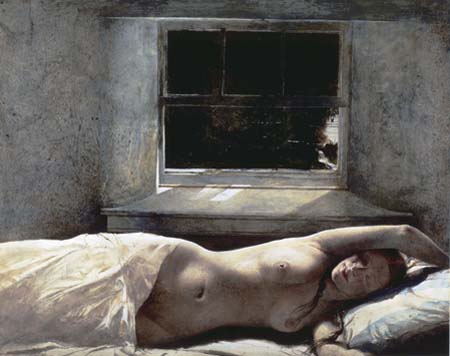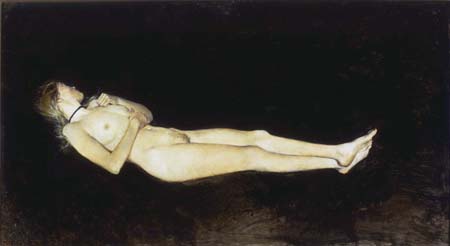Andrew Wyeth, Rebel

Overflow, 1978, Andrew Wyeth, American, 1917 – 2009, watercolor (drybrush) on paper, 23 x 29 in. Private Collection
On Wednesday night at SAM, my colleague Patti Junker delivered a sensational lecture that she titled “Andrew Wyeth, Rebel.” Few people think about one of the premier realists of the 20th century in terms of rebellion, but SAM’s curator of American art made the case that received wisdom has tended to gloss over the more challenging, less seamless narrative surrounding Wyeth’s long output.
Indeed, Patti demonstrated how his complex relationship to art world controversies could not be collapsed simply into the narrow terms of his late life love affair with a Chadd’s Ford neighbor, Helga Testorf. Her argument took an admirably broader view than that, and it never stooped to gossip. Wyeth’s complicity with the New York art world, which in many ways treated him as an outlier for the second half of the century, has been almost completely overlooked.
Patti stopped short of suggesting Andrew Wyeth was a secret abstract expressionist; instead she likened him to someone to whom I don’t imagine he is often compared: Marcel Duchamp. After an hour of deliberate, well-documented discussion of Wyeth’s complicated involvements with the Museum of Modern Art, his own unique family legacy (his father, N.C. Wyeth, was one of the premier illustrators of the turn-of-the-century), and his rural neighbors in both Pennsylvania and Maine, Patti’s speculation that the Helga pictures have more than a casual association with Duchamp’s final, enigmatic work, Étant Donnés, settled on the audience like a tremendous revelation. She convincingly brought together what, to my knowledge anyway, no other scholar has observed. The arrival of Helga to Wyeth’s private world coincided neatly with the unveiling of Duchamp’s final work at the Philadelphia Museum of Art.

- Black Velvet, 1972, Andrew Wyeth, American, 1917 – 2009, dry brush on paper, 21 1/4 x 39 1/4 in. Private Collection
Was Wyeth aware of this and did it determine his own late investigations of the American nude? Duchamp is infamously known as a cultural “bad boy”; Wyeth never pretended to seek that distinction, although the Helga pictures brought him some short-lived notoriety. Patti made a case for a strange and unforeseen commonality between two so-different artists. You could not dismiss the feeling that she was on to something important about the aesthetic challenges of late 20th century American art. It was a thrilling moment and I felt proud to be in an institution that shares this kind of new knowledge.
I want SAM to pursue curatorial innovation and taking chances. Audiences in Seattle ought to have access to the best works of art and feel what it means to subject them to the best minds’ efforts, minds unafraid to challenge received wisdom and provoke new thinking about culture. We need to continue to build on the reputation of Seattle as a center for ambitious projects and ideas of consequence that stretch across all fields. With colleagues like Patti, and a worthy, inquisitive community, this seems both doable and worthwhile.
Derrick Cartwright